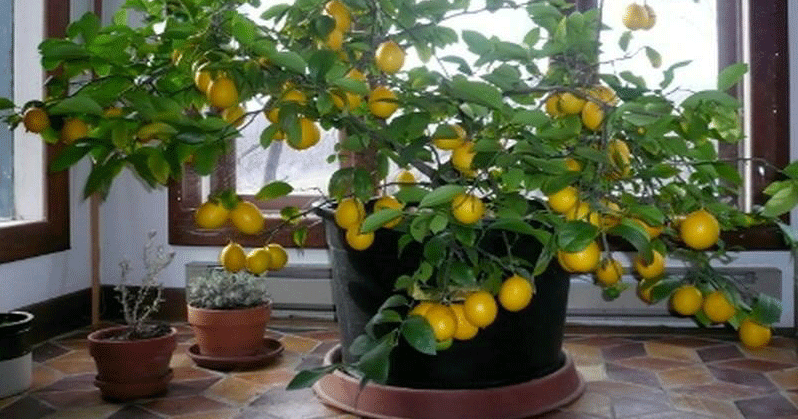We are all aware how citrus fruits are packed full of vitamins, potassium, calcium, phosphorus, magnesium. They are also very high in sugar – so managing how much of them you’re eating is imperative when it comes to maintaining a balanced diet.Some citrus fruits are easier to grow than others, and thankfully, two of the best ones can be grown right in your yard. By growing them yourself, you’ll be able to taste the difference in freshness and quality, and keep your body free from any chemical contamination associated with non-organic growing. Here is how to grown your own citrus fruits:
1. Lemons
I recommend buying a baby tree (2-3 years) to get the best results with your lemons. Pick out a clay or plastic pot (with a lot of holes in the bottom), and make sure that it’s a bit larger than the actual root ball of your baby tree (when the tree matures, it may need a pot that’s about 12-15 inches deep, and 17-20 inches in diameter) . Get your baby tree into the pot, and fill the drainage container with stones to improve air flow. Then, fill up your pot with soil. Keep in mind that some soils are specifically prepared for growing citrus fruits, so they will likely yield better results.
That’s basically all the prep you need. Make sure you’re giving it about 8-10 hours of sunlight a day, and watering regularly (be careful not to over-water). Lemons take about 6-9 months to ripen, so when they have a full color and a slight give to their touch – you’re all set.
Or you can grow one from seed.
“To grow your own lemon tree, you will need to obtain the following:
- An organic lemon since non-organic lemons often contain non-germinating seeds
- Fertile potting soil, preferably containing peat, vermiculite, perlite, and natural fertilizers
- A planting pot that is six inches wide and six inches deep
- A seedling pot that is about 24 inches wide by 12 inches deep
- A sunny, indoor growing location and possibly a grow lamp
Follow these steps to grow your own lemon tree:
- Moisten the potting soil so that it is damp, but not soaked, all the way through.
- Fill the smaller pot with soil, all the way up to an inch below the rim.
- Cut open your lemon and remove a seed. Remove all of the pulp from its surface. A good way to do this is to simply suck on it until it is clean.
- Do not delay to plant. The seed must still be moist when it is buried into the soil. Plant the seed about half an inch deep in the middle of the pot.
- Spray the soil that is directly above the seed gently with water from a spray bottle.
- Cover the pot with clear plastic wrap, seal the edges with a good rubber band, and poke small holes in the top with a pencil.
- Place the pot in a warm, sunny location.
- Spray on more water occasionally, not allowing the soil to dry out. Do not cause water to puddle though. Just keep the soil somewhat moist.
- After about two weeks, when the sproutling emerges, take the plastic covering off. If you need additional light for your lemon plant, you can use a grow light to supplement the sun’s light.
- Take care of the young plant by keeping the soil damp, by making sure it gets at least eight full hours of light per day, and by giving it moderate doses of organic fertilizer.
- Watch over your plant to ensure it is not attacked by bugs or diseases. Prune off brown, dead leaves when necessary. Use pesticides if you must. Protect your new lemon tree!
- When the plant outgrows its small pot, put it in the larger pot. You will go through much the same procedure when you re-plant it as when you first planted. Younger plants need more water than older plants, but they all do need adequate water. Don’t starve your poor plant after all that work of growing it!”
2. Mandarins
If you want to grow your tree indoors, I recommend going for a baby tree, the same way I recommended it for lemons. These baby trees just tend to have more successful growth records than starting with seeds. Prepare the pot the same way you would lemons (spacious with rocks, and drainage holes at the bottom), and give the oranges regular sunlight.
Mandarin trees are safe to grow indoors because they usually don’t grow much taller than 6 feet in height. Water them regularly but conservatively, and change the pot to a larger one once the roots grow back on themselves or poke out of your drainage holes. Pick the oranges as soon as they turn orange, because every moment after that means more and more flavor dying away.
Tip: Be careful twisting the oranges off of the tree – you want to make sure the little button at the top of the orange stays there.
I hope some of you use these two easy ways to get delicious citrus fruits on your table without any hassle.
